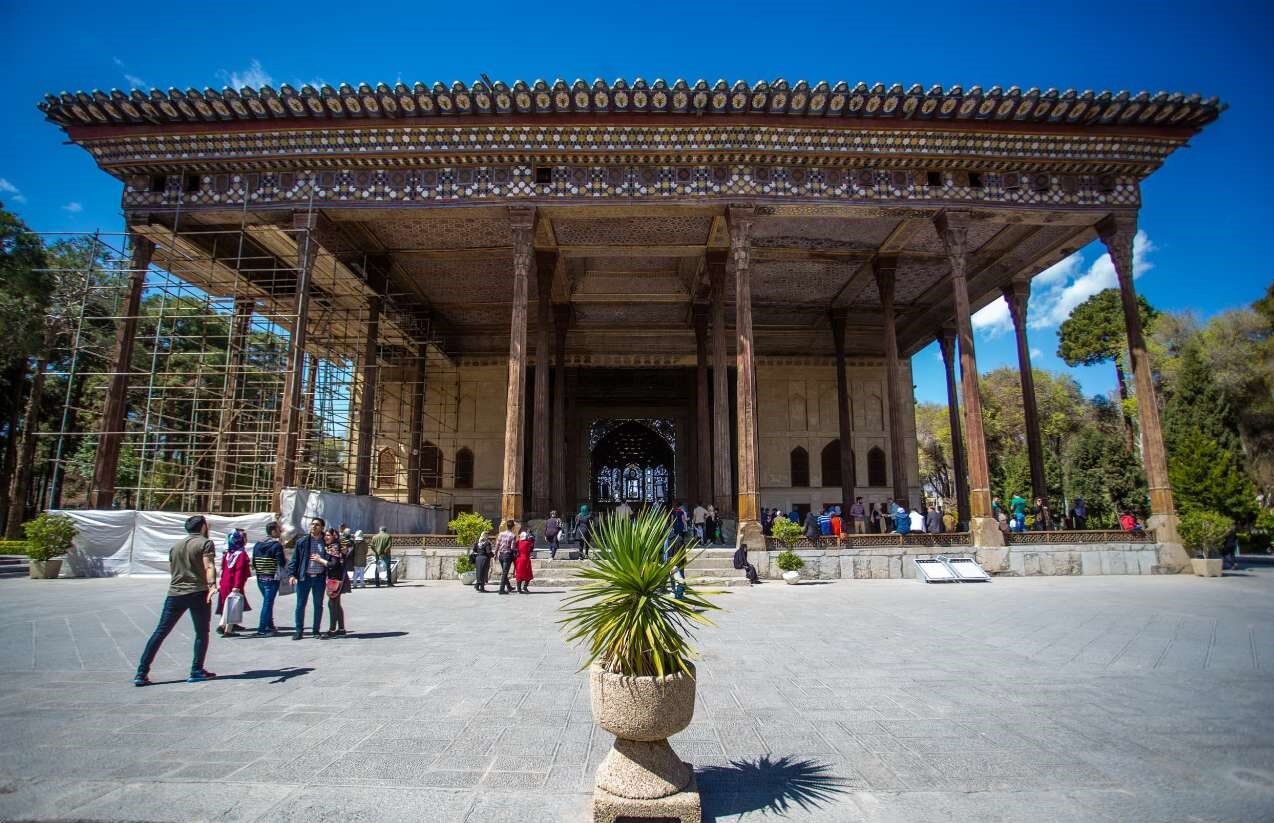Chehel Sotoun palace undergoes restoration

TEHRAN –Parts of the ceiling of the Safavid era (1501-1736) Kakh-e Chehel Sotoun in central Isfahan province have undergone some rehabilitation works, a local official has said.
Over time, the lack of insulation on the main two-layer roof of the palace's porch has caused damage to the ceiling decorations, which has been worsened by rain and moisture seeping in, Asefeh Badr explained on Friday.
The restoration project is expected to come to an end by the end of the current Iranian year (ends in March 2024), the official added.
Chehel Sotoun, located in the central Iranian city of Isfahan, is a surviving 17th-century palace, which used to be part of the royal precinct that stretched between Naqsh-e Jahan (Imam) Sq. and Chahar Bagh Abbasi St.
The Safavid-era palace was built as a pleasure pavilion and reception hall midst of a large park, itself an exemplar of the Persian Garden which has been inscribed on the UNESCO World Heritage list.
The name of the palace, which literally means “Forty Columns”, derives from the illusion that the twenty columns of the front portico are doubled by the reflecting pool to the south.
The palace is entered via an elegant terrace that connects a pattern of the Persian garden to an interior of elaborate design and splendor.
Chehel Sotoun boasts eye-catching frescos that depict multitudes of human figures, royal meetings, and battle scenes among them: the reception of an Uzbek King in 1646 and the infamous Battle of Chaldiran against the Ottoman Sultan Selim I.
Based on historical records, the building was initially constructed in the mid-17th century and rebuilt in 1706 following a raging fire.
ABU/AM
Leave a Comment